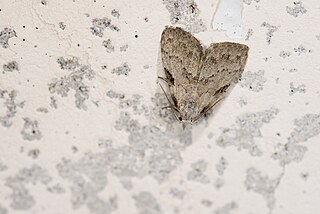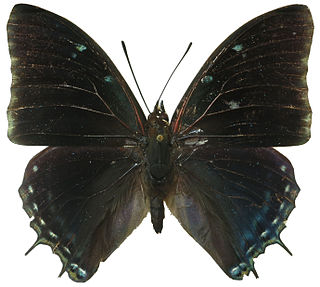
The Rothschild family is a wealthy Ashkenazi Jewish family originally from Frankfurt that rose to prominence with Mayer Amschel Rothschild (1744–1812), a court factor to the German Landgraves of Hesse-Kassel in the Free City of Frankfurt, Holy Roman Empire, who established his banking business in the 1760s. Unlike most previous court factors, Rothschild managed to bequeath his wealth and established an international banking family through his five sons, who established businesses in London, Paris, Frankfurt, Vienna, and Naples. The family was elevated to noble rank in the Holy Roman Empire and the United Kingdom. The family's documented history starts in 16th century Frankfurt; its name is derived from the family house, Rothschild, built by Isaak Elchanan Bacharach in Frankfurt in 1567.

The Temple of Portunus is a ancient Roman temple located in Rome, Italy. It was built beside the Forum Boarium, the Roman cattle market associated with Hercules, which was adjacent to Rome's oldest river port and the oldest stone bridge across the Tiber River, the Pons Aemilius. It was probably dedicated to the gateway god Portunus although the precise dedication remains unclear as there were several other temples in the area besides his. It was misidentified as the Temple of Fortuna Virilis from the Renaissance and remains better known by this name. The temple is one of the best preserved of all Roman temples.

Leopold de Rothschild was a British banker, thoroughbred race horse breeder, and a member of the prominent Rothschild family.

Asura is a genus of moths in the subfamily Arctiinae, and subtribe Nudariina erected by Francis Walker in 1854.
Cyme is a genus of moths in the family Erebidae. The genus was described by Felder in 1861.
Epimolis is a genus of moths in the family Erebidae. The genus was erected by Harrison Gray Dyar Jr. in 1913.
Episcepsis is a genus of tiger moths in the family Erebidae. The genus was erected by Arthur Gardiner Butler in 1877.

Hemonia is a genus of moths in the family Erebidae first described by Francis Walker in 1863. They are found only in Sri Lanka and Borneo.

Loxophlebia is a genus of moths in the subfamily Arctiinae. The genus was erected by Arthur Gardiner Butler in 1876.

Macaduma is a genus of moths in the subfamily Arctiinae.
Nodozana is a genus of moths in the subfamily Arctiinae erected by Herbert Druce in 1899.

Faxonius virilis is a species of crayfish known as the virile crayfish, northern crayfish,eastern crayfish, and lesser known as the lake crayfish or common crawfish. Faxonius virilis was reclassified in August 2017, and the genus was changed from Orconectes to Faxonius. It is native to the central United States, east to tributaries of Lake Erie, Lake Ontario, Lake Champlain and the St. Lawrence River in New York and to much of Canada.

Manoba is a genus of moths in the family Nolidae. The genus was first described by Francis Walker in 1863.
Vamuna is a genus of moths in the subfamily Arctiinae. The genus was erected by Frederic Moore in 1878.

Virbia is a genus of tiger moths in the family Erebidae. The genus was erected by Francis Walker in 1854.

Metasia is a genus of moths of the family Crambidae.
Crypsotidia is a genus of moths in the family Erebidae.

Cacyreus virilis, the eastern bush blue, mocker bronze or mocker blue, is a butterfly of the family Lycaenidae. It is found from South Africa to Zimbabwe, through central and eastern Africa to south-western Arabia.

Charaxes virilis, the blue demon charaxes, is a butterfly in the family Nymphalidae. It is found in Guinea, Sierra Leone, Burkina Faso, Ivory Coast, Ghana, Nigeria, Cameroon, the Republic of the Congo, the Central African Republic, the Democratic Republic of the Congo and Uganda. The habitat consists of lowland evergreen forests and forest/savanna mosaic.














